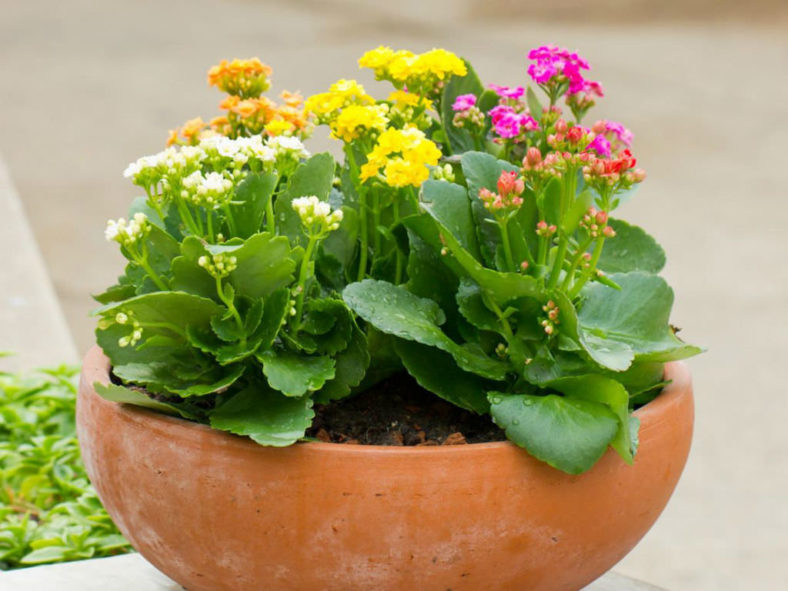Kalanchoes are pretty low-maintenance succulent plants that bear bunches of small flowers on branching bracts. They are typically grown indoors but can be placed outside whenever temperatures are warm enough or if winter temperatures do not get low enough to harm them. Grown indoors or outdoors, Kalanchoes still need bright light, dry periods between waterings, and room to spread their root system.
Hardiness Zone
While temperatures of 50°F to 60°F (10°C to 15.5°C) will keep the Kalanchoes in bloom, freezing temperatures can kill them. In USDA Plant Hardiness Zones 10 and 11, they can be planted directly in the landscape with minimal winter protection and will function as perennials. However, even a few hours of temperatures near 40°F (4.5°C) can kill unprotected Kalanchoe.
Location
Kalanchoes are lovely in or out of bloom, but need short daylight hours to produce flowers. Kalanchoes planted where nighttime lighting reaches the leaves may not produce flowers as often as those planted where they have long stretches of darkness at night. In USDA Plant Hardiness Zones 10 and 11, direct summertime sunlight can burn the leaves. Planted near a deciduous tree with dappled shade, Kalanchoes benefit from more winter and less summer sun.

Moving Indoors
North of USDA Plant Hardiness Zone 11, Kalanchoes are grown as summer annuals or must be planted in pots so they can be moved indoors when frost threatens. If they are set outdoors in an area with intense full sunlight, they must gradually adjust to the lower light levels they will experience indoors.
Outdoor Care
Kalanchoes grown outside do not need much care. They have low water needs, whether grown indoors or out. Do not water plants unless the top 1 inch (2.5 cm) or so of the soil feels dry. Kalanchoes have sensitive roots and do not like soggy soils, which can cause root rot and kill the plants. The plants can stand some drought, but it can inhibit plant growth if the soil gets too dry.
Propagation
You can propagate Kalanchoes in spring by taking cuttings of 2 to 3 inches (5 to 7.5 cm) shoots or a single leaf cutting. Some Kalanchoes, such as Kalanchoe laetivirens, produce leaflets or bulblets on the edges of leaves, which grow easily when they fall to the ground or when placed in soil.
Pests and Disease
Kalanchoes grown outside are more susceptible to pests. Aphids, spider mites, scale insects, and nematodes can attack the plant. Some signs of insect infestation include honeydew on leaves, bitten or torn leaves, and faded leaves. To treat plants for insects, use a non-toxic treatment like neem oil to avoid damaging the plant. Also, the plant can suffer from leaf spotting when grown in humid conditions.
Considerations
Heavy winds can break the succulent stems of Kalanchoes or even uproot them. Place the container in a sheltered area. Kalanchoes also do not "play well" with other plants in that they have a very demanding root system. They need plenty of root space from other plants, and particularly do not compete well with grass. The more root room they have in the ground or containers, the larger the plant will grow and the more flower clusters it can support.
Source: hunker.com
Links
- Back to genus Kalanchoe
- Succupedia: Browse succulents by Scientific Name, Common Name, Genus, Family, USDA Hardiness Zone, Origin, or cacti by Genus